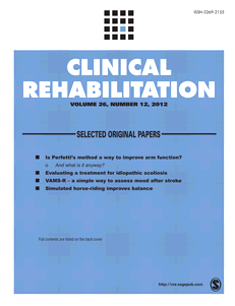
Physical Therapy & Rehab
No difference in pain or ROM between smartphone-based and conventional exercise for frozen shoulder
Clin Rehabil. 2019 Apr;33(4):653-660.84 patients with frozen shoulder were randomized to perform a self-exercise program delivered conventionally or with the aid of a smartphone application. The primary outcome of interest was pain, measured on a Visual Analog Scale (VAS). Secondary outcomes included range of motion (in forward flexion, abduction, internal rotation, external rotation). Usability questionnaires (TAM-2; USE) were administered to determine the feasibility of the application. The results from the trial found no significant differences between the two groups in VAS pain scores nor range of motion in all measured directions. The usability questionnaires revealed a high level of usefulness, satisfaction and ease of use.
Unlock the full article
Get unlimited access to OrthoEvidence with a free trial
Start TrialCritical appraisals of the latest, high-impact randomized controlled trials and systematic reviews in orthopaedics
Access to OrthoEvidence podcast content, including collaborations with the Journal of Bone and Joint Surgery, interviews with internationally recognized surgeons, and roundtable discussions on orthopaedic news and topics
Subscription to The Pulse, a twice-weekly evidence-based newsletter designed to help you make better clinical decisions
Exclusive access to original content articles, including in-house systematic reviews, and articles on health research methods and hot orthopaedic topics
Or continue reading this full article
Register Now

Subscribe to "The Pulse"
Evidence-Based Orthopaedics direct to your inbox.




































